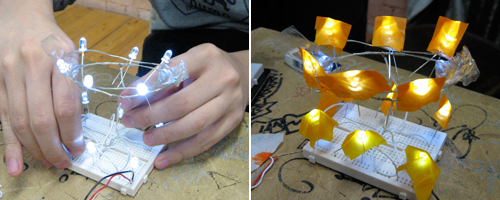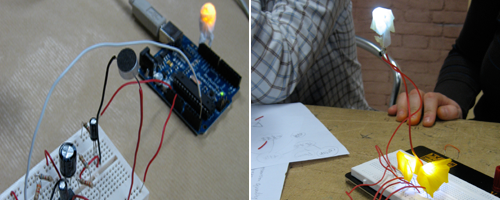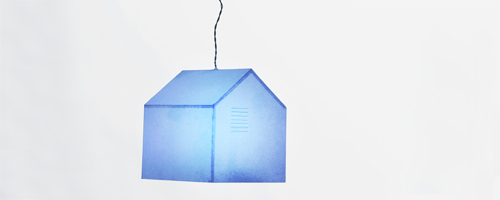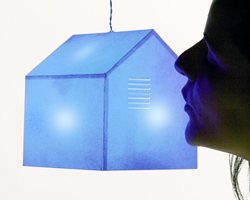The paper version hangs by a thread.
It is lit either by a yellow or a blue light. The yellow one means it is day where the partner is. The blue represents night.
When one partner arrives home a white light turns on in the house of the other partner.
By blowing on the window the white light in the other little house starts to blink.
ideal telecommunication
prototype
The shapes of the prototype were very close to how we would produc in a the real product.

on the left the led structure, on the right the leds covered by colored paper
The material we chose to use was parchment paper: it gives a nice light and folds crisply. We prototyped a pair of houses which one could show night and the other day. The lights were made by using sets of LEDs. We used white LEDs for the presence light and white LEDs covered with colored tissue paper for the day effect. The night was made using blue LEDs.

on the right the study on the left the microphone connected to a led, about how to place the presence light and the day one
For the prototype it was only possible to blow into one of the houses and the effect was shown in the second one.
Instead of using the air pressure sensor (which is quite expensive) we used a microphone to capture the air. We also needed an amplifier, otherwise the signal from the microphone was too low.

ardunio, microphone, resistors, amplifier, covered led and battery
We used an Arduino board in each house to translate the input, manage the output and transimit the data. Our challenge was to put all the components together and hang them to give the real feeling of the fragility of the houses. The communication was done using wires (instead of wireless). For power we used 9 volts batteries.
>> see more details about the code and the physical computing
liaison | mood, users, context | paper | ceramic | plexiglass | code, physical computing | early investigations | critical assessment | credits | download




